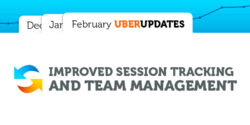Four Principles Of Usability Testing You Probably Forgot About, But Shouldn’t Have! (because it will cost you a bundle)

Although usability testing is a pervasive phenomenon in the IT community not all specialists know how to carry out this type of testing in a proper way. There are some peculiarities and principles that are easily forgotten; nevertheless they can have a great impact on the result of usability testing. Let’s discuss them.
Usability testing: how do we picture this process in our mind?
Suppose you have got a task to describe the process of usability testing. What will be the first image that will come up in your mind? I guess it will be an image of a test participant, who is sitting behind one-way mirror and is surrounded by special equipment (mobile device, web-camera for recording participant’s body language, microphone for recording participants “thinking aloud”, some program for recording everything that appears on the screen). You will be absolutely right, but at the same time there will be something missing on this picture. It will be an experienced and qualified user researcher who will make sure that other factors are in place off-screen.
A white coat and presence of a syringe in my hand doesn’t necessary makes me a doctor. The same way recording the participant’s usage of the mobile app doesn’t necessary means that I am carrying out usability testing.
There are four principles of usability testing that are easily forgotten by other testers no matter how important these principles are.
#1. Screen for behavior rather than for demographics
Sometimes when you are recruiting people for usability testing you are choosing them with the help of demographic screener that has its focus on such aspects as gender or age. That’s not right since the issues that these participants may have with user interface of your mobile app have nothing to do with their demographic determinants. You will need to recruit participants on the base of their behairvor instead (perhaps they already have some experience using your mobile app).
#2. Map out frequent and critical activities on your website and test it.
There are several kinds of usability testing: moderated and unmoderated, carried out in a laboratory or remote ones. No matter what variant of usability testing will be preferable for you; you need to be sure that it has its focus on testing points that are crucial for both customers and organizations.
Never ask people, what do they think about the design of the website (of course if it’s not a website for designers). The other way round, test only real activities that will take place on you website.
#3. Pay attention on users’ actions, but not on their words.
Usability tests that are carried out in laboratories engage small groups of people. Usually it is five participants. The cases where more than twenty participants are involved are rare (usually larger groups are used in remote usability testing). This small size of groups is appropriate because usability tests increase focus on cognitive, problem solving behavior and when we are dealing with the work of the brain the people doesn’t differ greatly. The issues may take place when the usability tester squeeze in the process of usability testing some other questions he would like to investigate.
Questions like: “What do you think about the price of this mobile app? “ “What feeling do you have when you are using it?” are inappropriate since they don’t have any sense. The group of participants is small and the answers you will get don’t not have any prospective value. Besides, issues can occur if you ask the participants to comment their behavior and to explain why they acted in some particular manner in some particular situations. Remember that the question why doesn’t exist in usability testing since the participants cannot always explain their behavior or motivations.
#4. Asking users to change the interface is inappropriate.
In cases when the participants face some issues with some aspect or function of user interface of your mobile application you may have a strong wish to ask them: what changes they would like to make in order to make it more convenient and user-friendly for them? But if changing user interface was such an easy task, the developers will be left without work and the participants themselves would be developing the new generation of user interface.
Believe me or not, when the participant finds some difficulty in choosing the button he needs he will be frustrated to hear the following question: What changes should be done to make button more vivid for you? You will definitely get two inevitable answers: “Make in larger” and “Change its color”. The thing is that the participants simply don’t know all the possibilities and when you offer them to find the solution concerning the generating of the design, they pay attention on something that is as clear as day or they highlight the solutions that are good for one context but will be absolutely inappropriate in another one.
Check out how much will it cost you to test usability of your app.

